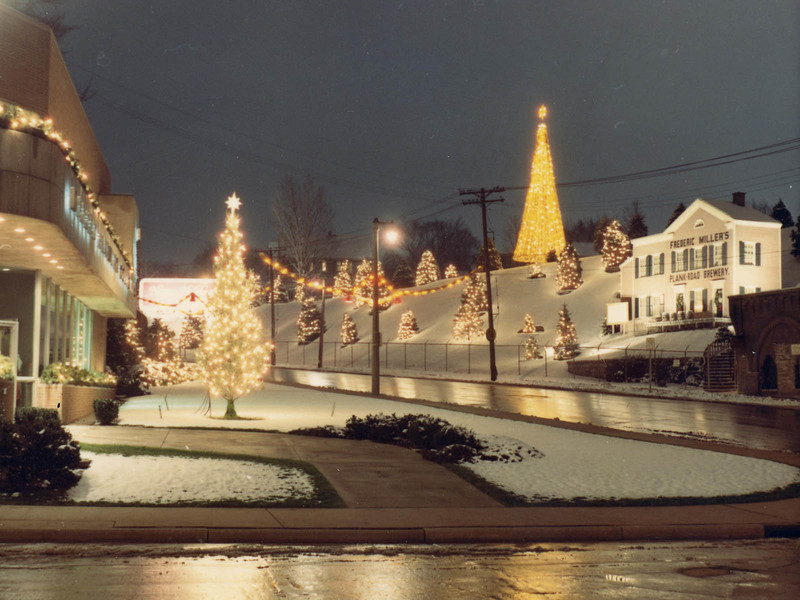Editor’s note: This is one of an occasional Milwaukee Neighborhood News Service series of articles about the people and places of 53206.
The museum sits behind a locked door in an inconspicuous red brick building on the corner of 27th and Center Streets. To enter, visitors have to ring the doorbell. Clayborn Benson III, the founder of the Wisconsin Black Historical Society, personally lets them into a spacious carpeted room with white walls, covered in posters backed with construction paper, mimicking those that could be found in a classroom. They display information about African-American history in southeast Wisconsin, including the Underground Railroad and slavery in the state.
A quick trip up a back staircase reveals file cabinets bursting with donated documents such as newspaper articles and obituaries, and boxes are scattered everywhere.
Although organized with the help of college student volunteers, it’s clear that Benson’s museum has outgrown its space. Plenty of things have yet to be catalogued or displayed.
Accumulating so much material and growing the museum into a community institution didn’t happen overnight.
When Benson was an adult student at University of Wisconsin-Milwaukee in 1987, he produced a documentary, "Black Communities," for a film class. The three-part film follows a grandfather as he shares stories with a young girl about black history in the United States, Wisconsin and Milwaukee. The project reignited Benson’s love of history.
"I really love history," Benson said. "History fits my spirit … I understood what I was supposed to do in this lifetime, and this was important to me."
Benson’s calling is much more than a personal mission; many others have gotten behind it. When he hosts events at the Wisconsin Black Historical Society, from 25 to 500 people show up.
"Black history is American history, and you have to preserve as much as you can, as accurately as you can," said Joanne Williams, a member of Wisconsin Black Media Association and a former colleague of Benson’s at WTMJ-TV, where he worked as a photojournalist for 39 years.
"For many, many years, black history was ignored. There are just thousands and thousands of voices that you don’t even know lived and died and made an impact," Williams said.
People who are ignored have something that Benson calls "Black Panther Syndrome." "In their lifetimes they give so much to this community, and they’re hardly ever recognized. I get a great deal of joy in pulling them out of the shadows of history and pumping them up and allowing people to know who they are."
Williams has served on panels and co-hosted events at the society, covered it as a reporter, donated materials and said she plans to donate much more. "One of these days I’m going to pull it all in some sort of form that he can then put in the museum and be available for people to see."
"Like any other compilation of history, I hope (visitors) learn who my family was and what my family contributed to Milwaukee and southeast Wisconsin, and that their families are just as important and they made important contributions too," Williams said.
Benson said that he finds those important stories every day.
"I find gold mines under pieces of paper, between books … I find valuable things daily. I mean really valuable. I’m not talking money … It’s little stories of people’s lives, understanding what they went through," Benson said.
As the society’s founder, Benson sees himself as a teacher. "We examine history and how it relates to (people) and why it’s important for them to know history," Benson said.
Benson often takes visitors to the museum on a personal tour He’s been known to stop at a particular exhibit to tell stories for more than 30 minutes.
He not only teaches at the museum, but also at schools and in daily interactions. Part of teaching, he said, is encouraging other people to write down their own stories so they can be passed down for generations. He’s even taken the task on for himself. "I’m writing mine … I can’t ask people to write when I don’t write."
He’s now writing about the stories he covered as a photojournalist. Later, he plans to add recollections about the museum, places he’s lived and conflicts he’s dealt with. "I write it on my phone and then I transfer it to Microsoft Word," Benson said.
Williams said that journalists and researchers often contact Benson when they’re looking for information.
"I think he’s done an impressive job as just a man who decided he was going to build a museum to make sure that the history of African-Americans in this part of the state was told."





